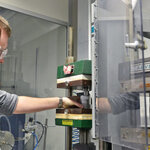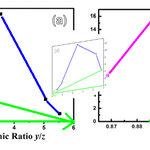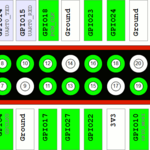Applied Physics

By using lasers to manipulate a superfluid gas known as a Bose-Einstein condensate, the team was able to coax the condensate into a quantum phase of matter that has a rigid structure — like a solid, and can flow without viscosity, a key characteristic of a superfluid. Basically, they have created a supersolid, a
new form of matter which combines the properties of solids with those of superfluids.
Isn't that a contradiction?
“It is counterintuitive to have a material which combines superfluidity and solidity,” says team leader Wolfgang Ketterle, the John D. MacArthur…

The manufacture of cement, bricks, bathroom tiles and porcelain crockery normally requires a great deal of heat: a kiln is used to fire the ceramic materials at temperatures well in excess of 1,000°C. Now, material scientists from ETH Zurich have developed what seems at first glance to be an astonishingly simple method of manufacture that works at room temperature. The scientists used a calcium carbonate nanopowder as the starting material and instead of firing it, they added a small amount of water and then compacted it.
“The manufacturing process is based on the geological process of rock…

The engineering mindset often dismisses philosophy as useless for science. However, those who understand science or philosophy deeply also know that philosophy drives the cutting edge of science as much as scientific thinking is at the cutting edge of philosophy. This did not stop with Einstein and Feynman or Wittgenstein on the philosophical side. It is proven true once again by recent progress in nanotechnology and catalysis published in the Nature group of journals in November 2016. [1] www.nature.com/articles/srep37092
Figure adapted from [1], illustrating how optimization is helped by…

An Interconnection Between All Things?
All matter within the universe is interconnected and holds within it, the memory of its interconnection. The laws of motion are an example of this interconnectedness. The motion of any one item or object literally does not exist unless it is in reference to all other objects within the universe. With a simple thought experiment, the interconnectedness between all matter can be easily demonstrated.
Imagine for a minute, that in all of time and space, and in all of the universe, there now happens to exist only one single heavenly body, and that one single…

Russian scientists at the Moscow Institute of Physics and Technology (MIPT), the Joint Institute for High Temperatures of the Russian Academy of Sciences (JIHT RAS), and Gamaleya Research Centre of Epidemiology and Microbiology found that treating cells with cold plasma leads to their regeneration and rejuvenation. This result can be used to develop a plasma therapy program for patients with non-healing wounds. The paper has been published in the Journal of Physics D: Applied Physics.
Non-healing wounds make it more difficult to provide effective treatment to patients and are therefore a…

We already must deal with computers too much rather than too little, and there is already lots of advanced computing done also for example in materials science and nanotechnology, for example molecular dynamics (MD) and Monte Carlo simulations.[2] The molecular biologist’s programs for predicting protein folding can also count as nanotechnology. Nevertheless, all of our previous articles* concluded that we need more computing, and several mentioned statistics. This would sound predictable if coming from a statistical physicist with a background in computing, advertising his skills. However,…

Nanotechnology promises how
centrally important and powerful it will be in the near future. The near
future is always “just around the corner,” much like the breakthrough
in fundamental physics - if we just had one more super particle
collider, you know, just this last one again. We may dismiss such hype,
but rejecting it wholesale fails to see that nanotechnology poses
globally existential risks in a way unknowable yet also unavoidable like
no other technology.
We cannot here discuss unintended
consequences in detail – there are many ‘unknowable unknowns’ such as
the long term side…

When optimizing in multi-dimensional parameter spaces, local maximums are not as much of a problem as being misguided by maximums that are constrained on a lower dimensional subspace. Therefore, so called ‘walk-in’ methods are necessary. They must explore all directions of the high dimensional space. Apart from such details, we are more interested in complexity as such in order to allow complex reactions and properties/behaviors in the first place (before optimizing), and to further research how proxy-measures of complexity compare to performance. We therefore focus on emergent properties to…
In a previous How-To Guide I demonstrated how to blink a Snap Circuits LED with the Kano Computer (blinking an LED is the “Hello World!” of hardware hacking) and in this guide I’ll demonstrate how to drive a variable speed fan with Snap Circuits and the Kano Computer. I’ll actually use the same Scratch program that I used to blink the LED to control the speed of the motor. When I pressed the up arrow on the Kano keyboard, the LED blinked faster and faster. Conversely, when I pressed the down arrow the LED flashed slower and slower. In this circuit, when I press the up arrow the fan will…

For Pi Day 2016, I’ll demonstrate how to flash a Snap Circuits LED with the Kano Computer (my version of the Kano has the Raspberry Pi 2). I've lost count of how many computers I've built over the years, but I think it is safe to say that the Kano Computer was the easiest build ever. So simple a child could do it. Kano founders, Yonatan Raz-Fridman, Alex Klein, and Saul Klein, wanted to figure out what the next generation’s computer would be like, so they asked Micah, Saul’s seven-year-old son. Micah advised that he wanted to build the computer himself but it “had to be as simple and fun as…